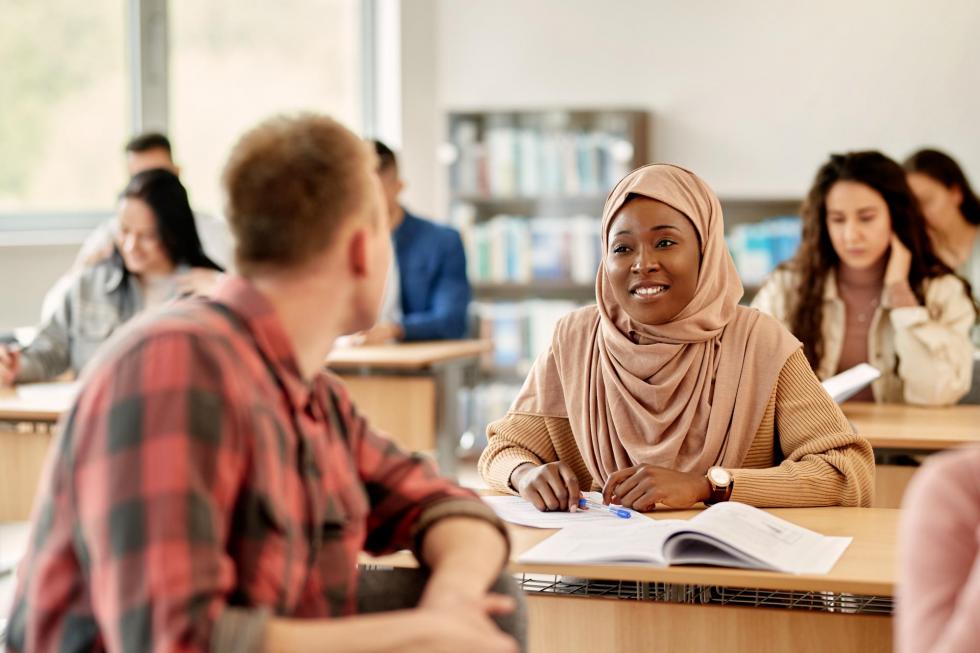Academics and Exploration Beyond the Classroom
 Relevant social studies instruction inspires
students to explore the world and how they fit in it and empowers
them to become our next generation of leaders and informed
decision-makers.
Relevant social studies instruction inspires
students to explore the world and how they fit in it and empowers
them to become our next generation of leaders and informed
decision-makers.
Required for all students, social studies broadly includes the study of history, cultures, economics, civics, human behavior and much more. SREB and the National Geographic Society both offer teachers tools and strategies that make teaching and learning social studies meaningful and enjoyable. Our Powerful Social Studies Instructional Practices and National Geographic’s Resource Library give teachers instructional resources they can use to create experiences that broaden students’ horizons and encourage them to think deeply about who they are and how they can contribute to making a better world.
SREB’s Powerful Social Studies Instructional Practices
SREB’s Social Studies PIPs are more than just a set of best practices for instruction: They offer teachers a complete framework for prioritizing standards-based planning, teaching and learning. Following the PIPs, teachers design standards-aligned instruction and assignments that immerse students in the process of analyzing and evaluating social studies themes. For example, to help students understand how individuals, groups and institutions interact, a teacher might prompt students to consider the types of businesses and business owners who comprise their local city’s business district through the lens of economic inclusiveness and equity and create a proposal for enhancing its practices to promote opportunities for people, entrepreneurs and employees to strengthen their local economy.
As they complete inquiry-focused tasks, students develop literacy skills and hone their ability to identify and cite evidence from credible sources, participate with their peers in lively academic discourse and demonstrate their deeper understanding of historical, social or cultural concepts.
Teachers have a strong influence on how young people respond to human rights or environmental issues. Teachers can use the social studies PIPs to help students approach figures, events and historical, cultural or ecological concepts not as names or dates to be memorized, but actively, as problem-solvers and solution-seekers. Teachers can also spotlight issues affecting their local community and draw on current events to challenge students to conduct research and take informed action to address local, regional or global problems.
National Geographic’s Resource Library
Aligned with National Geographic’s Learning Framework, National Geographic’s rich trove of Pre-K-12 units, lessons, activities and interdisciplinary, multimedia source materials were designed to increase students’ awareness of historical, cultural and ecological issues and inspire them adopt an explorer mindset.
In National Geographic’s Breaking Down Invisible Walls activity, for example, students in grades six to 12 look at the social boundaries that exist in their communities or schools and discuss ways to cross them. Students take a deep dive into examining how differences contribute to society. Linking this type of activity to SREB’s Powerful Social Studies Instructional Practices makes learning more meaningful by providing students with a standards-aligned context for collaborating and engaging in civil discourse.
A Win-Win
By combining SREB’s Powerful Social Studies Instructional Practices and National Geographic’s interdisciplinary resources, teachers can create captivating instruction and assignments that introduce students to people, places and experiences they might never encounter outside the classroom. Such adventures simultaneously prepare students to not only achieve learning goals but also make a difference in their world.
Learn more: Contact Quinton Granville at quinton.granville@sreb.org.
This article was originally featured in the January 2022 issue of our Promising Practices Newsletter.

